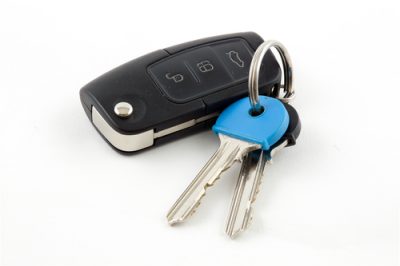 A key fob is a small device that manufacturers program to give users access to secure property such as a locked car, home or business. For a more in depth guide check out our article on what is a key fob. Fobs are essentially digital keys that provide access remotely. The user does not have to unlock the door with a real key. The fob provides convenience and security not typically found in manual locks.
A key fob is a small device that manufacturers program to give users access to secure property such as a locked car, home or business. For a more in depth guide check out our article on what is a key fob. Fobs are essentially digital keys that provide access remotely. The user does not have to unlock the door with a real key. The fob provides convenience and security not typically found in manual locks.
Fobs and Radio Frequency Identification (RFID)
Fobs perform their function of locking or unlocking a device via a built-in Radio Frequency Identification (RFID) system. This barcode system utilizes an electromagnetic field to locate or identify stored information called tags. The tag provides the information to the remote device using radio frequencies.
The RFID device performs similarly to a credit card strip in that it provides one-of-a-kind secure information to the fob. The key fob case contains a reader to gather the information from the tag. If the information from the tag matches the information that the fob is requesting, the locking or unlocking function will be performed.
The only difference between a fob and a credit card reader or scanner is that neither the fob nor the RFID has to be in a stationary position for the frequency to be transmitted. If the user is within proximity of the RFID device, they push the button on the remote and trigger the remote entry function. It’s that simple.
The Key Fob Configuration
Four items are needed for the key fob to work:
- the fob
- a reader
- a locking mechanism
- a door
The configuration starts with a code imprinted onto a microchip. The chip contains an assigned frequency that communicates directly with the reader. If the code and the frequency line up, the door opens. Each fob carries a unique code. Thus, only one fob is initially assigned to open a particular door.
Subsequently, a manufacturer can produce multiple fobs that carry the same code for one reader. This setup allows multiple users to access the same door.
The Remote Reader Configuration
The remote reader scans the information contained in the key fob. When the user passes the fob in front of the reader, the reader either accepts the information and performs the function or rejects the information and does nothing. The reader contains a transmitter that sends the signal to the fob, which, in turn, adjusts to the frequency of the transmitter.
The fob gets its power through the magnetic energy that is exchanged between the unit and the remote reader. Since the power is magnetic, there is no need for battery power. Without a battery, manufacturers can create tiny fobs that fit onto keyrings or can be stored in small cases. The reader, however, may need to be larger for the transmitter to send signals over long distances. The most common frequency used in transmitters is 125kHz.
 The Fob’s Locking Mechanism
The Fob’s Locking Mechanism
Every fob and remote reader system needs a security measure that either grants or denies access to a door lock. Manufacturers add a level of security by implementing a locking mechanism. When the user pushes the button on the fob, the mechanism tests the signal. If there is a match, the mechanism unlocks the door. If the mechanism does not sense a match between the reader and the fob, it does not unlock the door, and the door won’t open.
Open-Access Fobs and Readers
Fobs and remote readers can be programmed to communicate on an open-access platform. Manufacturers can design a single fob or reader to communicate with multiple devices. This allows several users to access the same door within a facility. For instance, if a condominium has a conference room, pool, annex or laundry room, a single reader can match the same signal from multiple fobs. All users with a matching fob will be granted access to the facility.
Multi-Level Remote Entry Access

Although the setup for remote entry access is quite simple, there are numerous options for a setup that can apply to a wide range of settings. Facilities that require various levels of access can utilize a server that acts as the locking mechanism for all entryways into a building or for specific areas within the building.
The server communicates with multiple fobs and readers simultaneously to grant occupants access on various levels. While some users may have access to the entire building, other users may only have access to specified areas. An administrator can program and change the server as necessary without requiring new fobs or readers with every update.
This type of remote access is convenient and more secure. It also gives users the ability to carry a handy device that is small enough to carry in a pocket. Remote entry is far and away the best setup for any facility that requires a high level of security but doesn’t want to keep changing keys and locks.